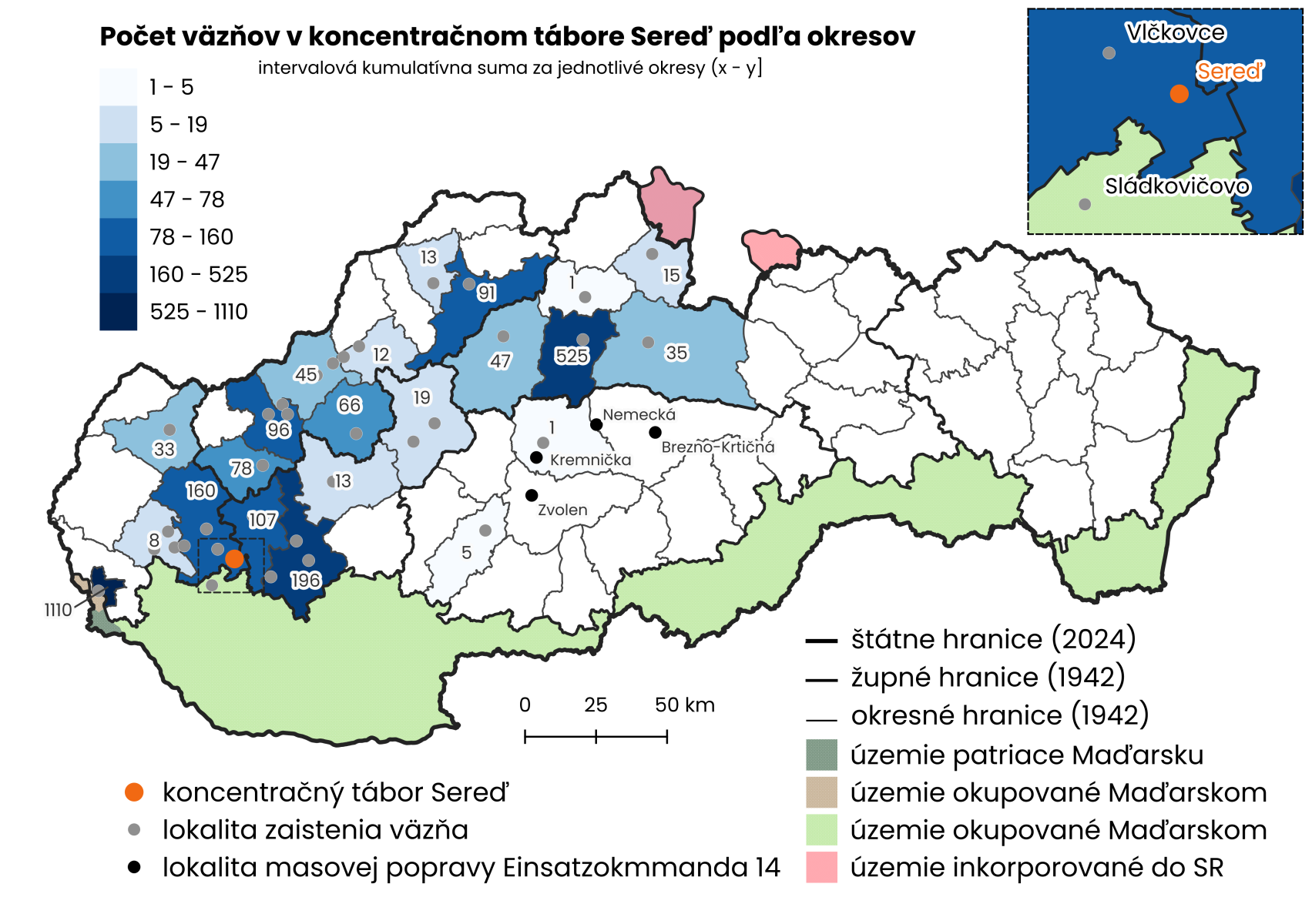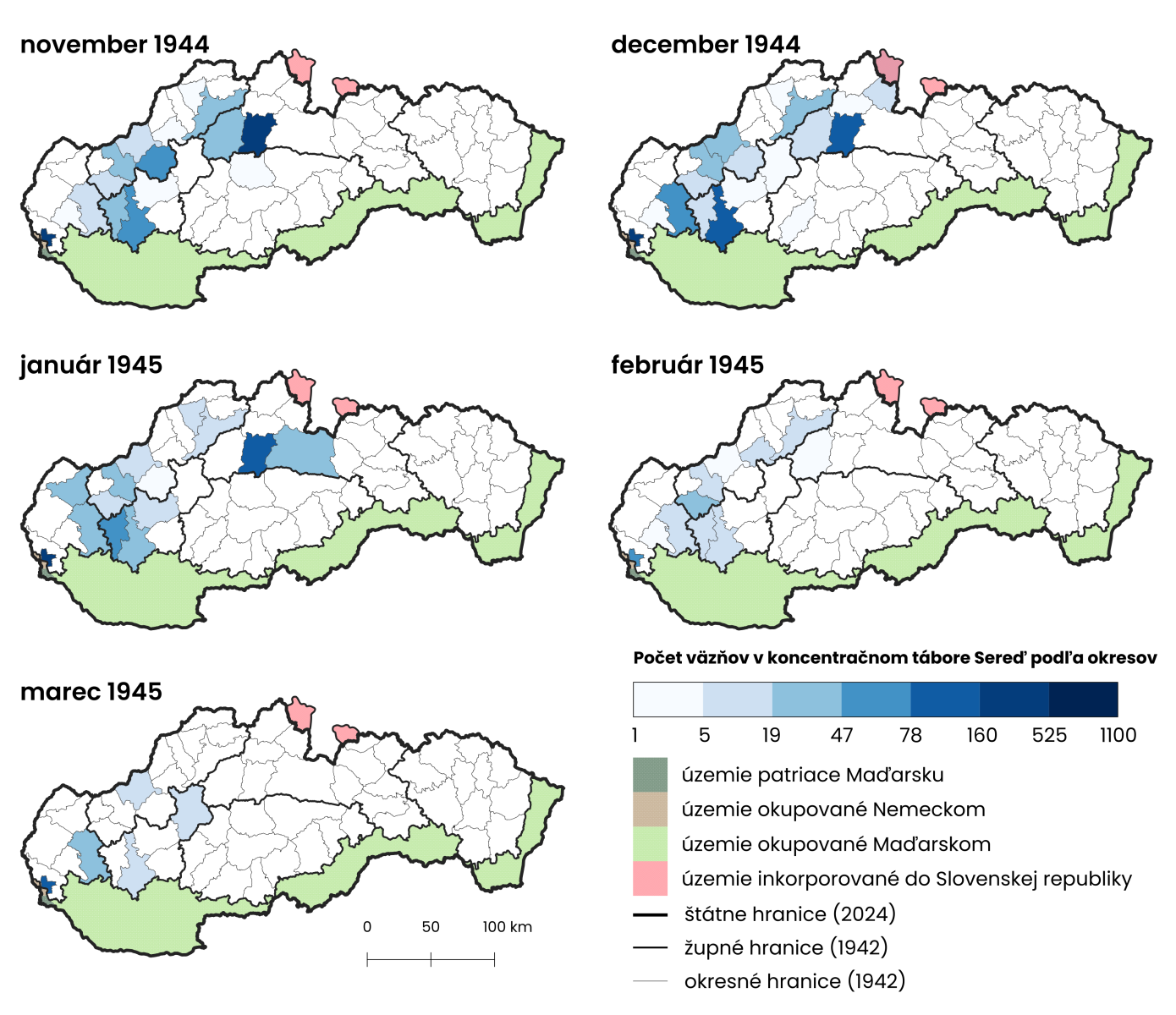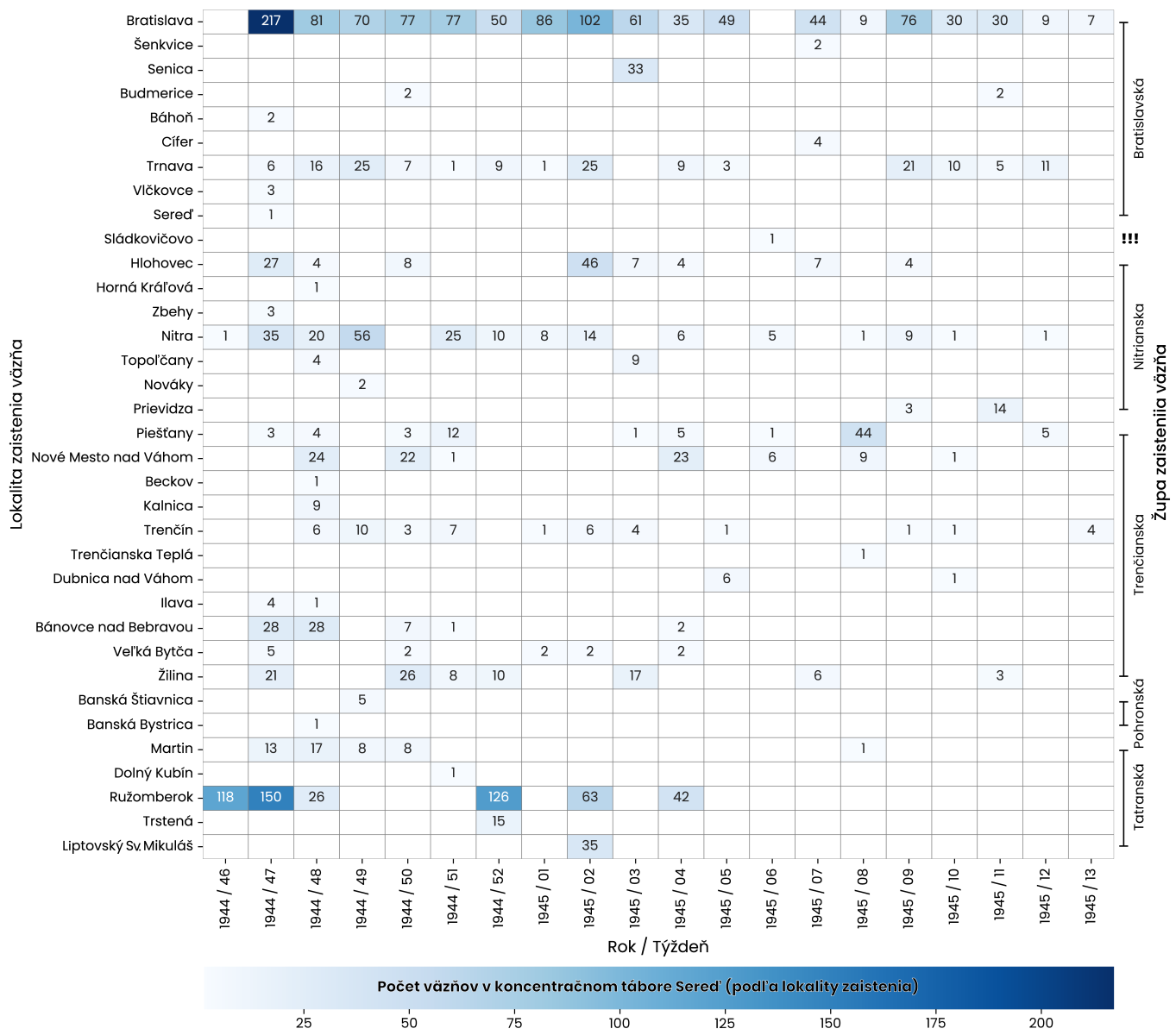This interdisciplinary study provides new insights into the prisoners of the Sered concentration camp during the final phase of the Holocaust in Slovakia.
In their latest article, Hlavinka and Goga (2025) present the results of applying digital humanities methods, which are the outcome of closer cooperation between the Historical and Geographical Institutes of the Slovak Academy of Sciences. An analysis of the records of the Sered concentration camp from 1944–1945 shows that the camp was not a Slovak-wide center of deportations, but functioned primarily as a regional hub for western and central Slovakia. The data also reveal the presence of prisoners of all ages – from newborns to octogenarians – and confirm the systematic efforts of the Nazis to arrest entire families regardless of age or gender.
The authors processed a total of 2,718 records using the Python programming language and visualized them in a GIS environment. The records made it possible to create spatial visualizations of the deportations as well as basic statistical characteristics of the prisoners. Most of the people came from Bratislava, Nitra, Hlohovec, Trnava, and Žilina. On the other hand, eastern Slovakia, which was already controlled by another Nazi commando, remained outside the jurisdiction of Sered.
The significant decline in the number of registered prisoners from November 1944 to February 1945 reflected the fighting at the front and the retreat of German-controlled territory. At the same time, the tragic reality was confirmed that in the Pohronská County, instead of deportations to Sered, mass executions (and not only) in Kremnička, Nemecká, and Zvolen dominated. An extremely interesting finding is the case of the deportation of a Jewish woman from Sládkovičovo, which was part of Hungary at the time – proof that the transports also crossed the borders of allied but occupied states.
If you are interested in this topic, you can read the entire article, entitled Spatial and Data Analysis of Concentration Camp Prisoners in Sered (November 1944 – March 1945), in the journal Slovenský národopis / Slovak Ethnology (IF 2024: 0.5).
The article is part of research within the following projects:
- VEGA 2/0106/24 – Migration waves in the 20th century and their impact on Slovak society
Text: Tomáš Goga








